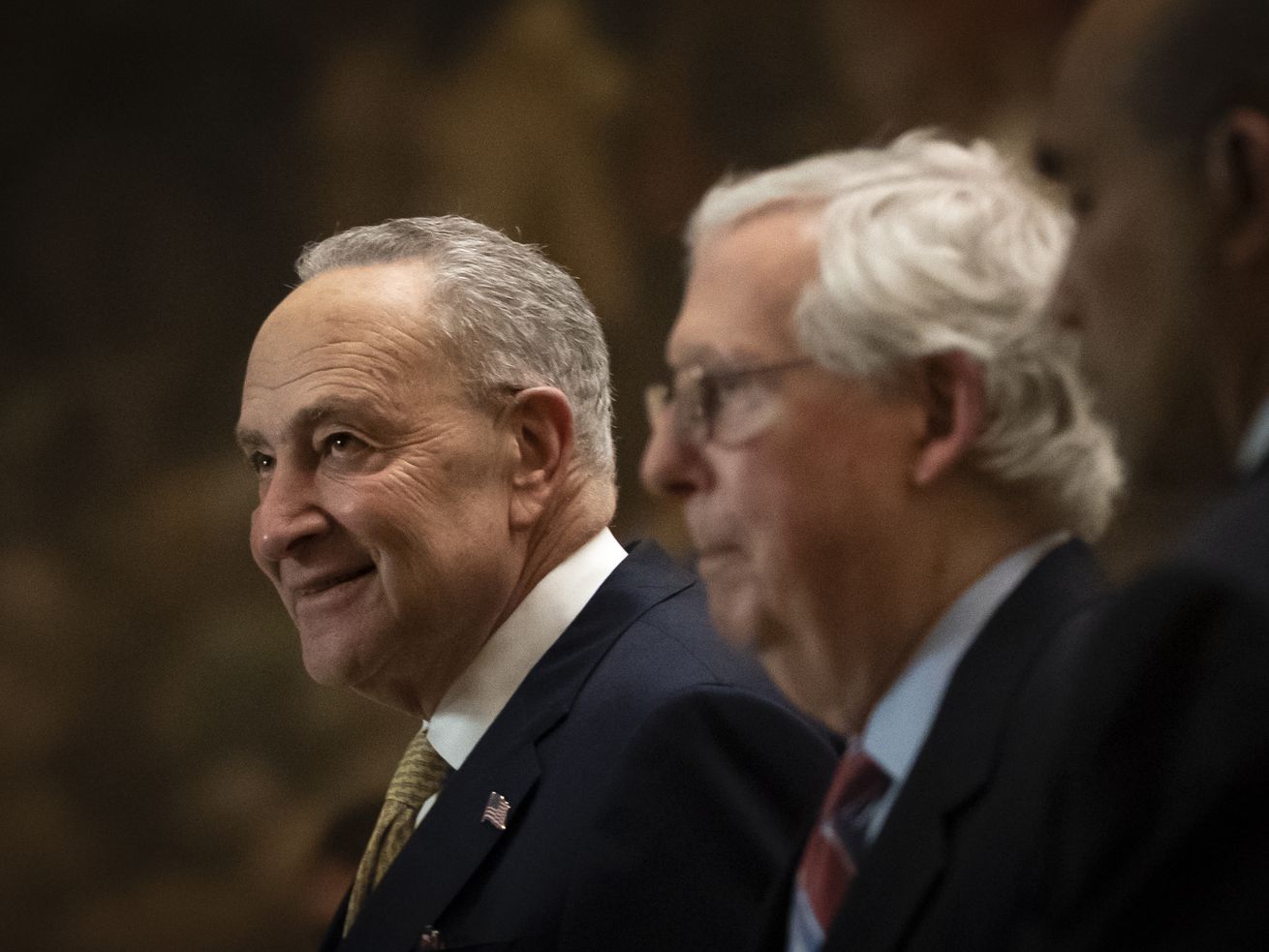Aid for Ukraine is giving new urgency to government funding bills that have been held up since last fall.
Congress is finally on track to pass full-year spending bills this week, a major development that could release billions of dollars in aid to Ukraine, more Covid-19 relief, and much-needed infrastructure money.
This has been a long time coming: Since last fall, Democrats and Republicans have been unable to agree on what these bills — which govern how the US will spend its money in the upcoming fiscal year — should include. That’s led lawmakers to pass three short-term spending measures to buy themselves more negotiation time. The latest short-term bill expires on Friday, March 11, meaning Congress needs to approve a complete package of 12 full-year appropriations bills by then, or another stopgap fix, to prevent the government from running out of money and shutting down.
Lawmakers are inching closer to a resolution on the full-year bills. Democrats and Republicans have agreed to keep any increases to social spending at the same levels as increases to defense spending, something that was previously a sticking point in negotiations. After announcing a framework deal in February, lawmakers also recently added Ukraine aid to the package, adding a new urgency to the bills’ passage.
“This year, the spending bill comes at a consequential moment: War in Europe has focused the energies of Congress into getting something done, and getting it done fast, quickly,” Senate Majority Leader Chuck Schumer said in a floor speech on Tuesday.
What’s riding on the appropriations bills
The inclusion of as much as $12 billion in aid to Ukraine has brought new energy to negotiations on the appropriations bills. While Republicans and Democrats have disagreed on many key elements of the bills, both parties want to send money and supplies to Ukraine as soon as possible. And that now means getting appropriations passed without delay.
This aid, which is more than the $10 billion requested by the White House, is intended to provide humanitarian relief and military support, including funding for refugees, medical supplies, food, and weapons transfers. Such aid is separate from bipartisan trade legislation a group of lawmakers has put together to severely limit US trade with Russia and Belarus. That bill would also curb energy imports from Russia, a move the Biden administration took on its own on Tuesday following congressional pressure.
The passage of full-year appropriations bills would be significant for several other reasons: Congress has been using continuing resolutions to fund the federal government up until this point. That’s locked spending at different agencies in at Trump-era levels. By approving new appropriations legislation, Congress will be able to respond to the updated needs that different agencies have, including new funding for medical research and health programs for veterans. And it will also be able to provide funding for new programs, including those established by the infrastructure bill last year.
As Sen. Mark Warner (D-VA) noted last month, much of the spending allocated in the infrastructure bill has been held up because it has to be formally approved by Congress first via these appropriations bills. Once the bills are passed, millions in funding for roads and bridges, and transportation programs, can be funneled out.
This legislation could also include up to $22.5 billion in additional Covid-19 relief intended to fund more tests, vaccines, and treatments, and money to help the country prepare for potential new variants. This request has run into opposition from Republicans, however, who argue that there’s still funding left over from previously approved state and local aid that has yet to be spent.
Beyond the larger expenditures that it’s expected to contain, the appropriations package also brings the return of earmarks, or the ability for lawmakers to set aside funds for specific projects in their state or district.
In the Senate, these earmarks are now called “congressionally directed spending” and can include requests for community centers, fire stations, and airport terminals. In the House, they are called “community project funding,” and similarly can include requests for regional water projects, local school programs, and workforce training.
What comes next
The House is expected to vote on the appropriations legislation on Wednesday before Democrats leave for a planned retreat in Philadelphia, and the Senate is set to take up the bill before the end of the week.
Before it can vote on the measure, however, the Senate will likely need to hold another vote on an amendment from a group of Republican senators who’ve threatened to block taking up the appropriations legislation under expedited conditions unless lawmakers consider defunding President Joe Biden’s vaccine mandates for federal employees. Sens. Ted Cruz (R-TX) and Mike Lee (R-UT) are among those leading this push, which has stymied funding votes twice before as well. Both previous votes on defunding the vaccine mandates failed.
Schumer and House Speaker Nancy Pelosi have expressed confidence that lawmakers would be able to reach an appropriations compromise ahead of this week’s deadline. In the event that Democrats and Republicans are unable to do so before Friday, however, lawmakers would have to consider another continuing resolution, which would keep the government funded for a short period of time, and would likely send aid to Ukraine as well.
Full-year bills, though, are preferable because they reflect current funding needs, allowing federal agencies to more adequately cover staffing and programming costs.
Author: Li Zhou
Read More
